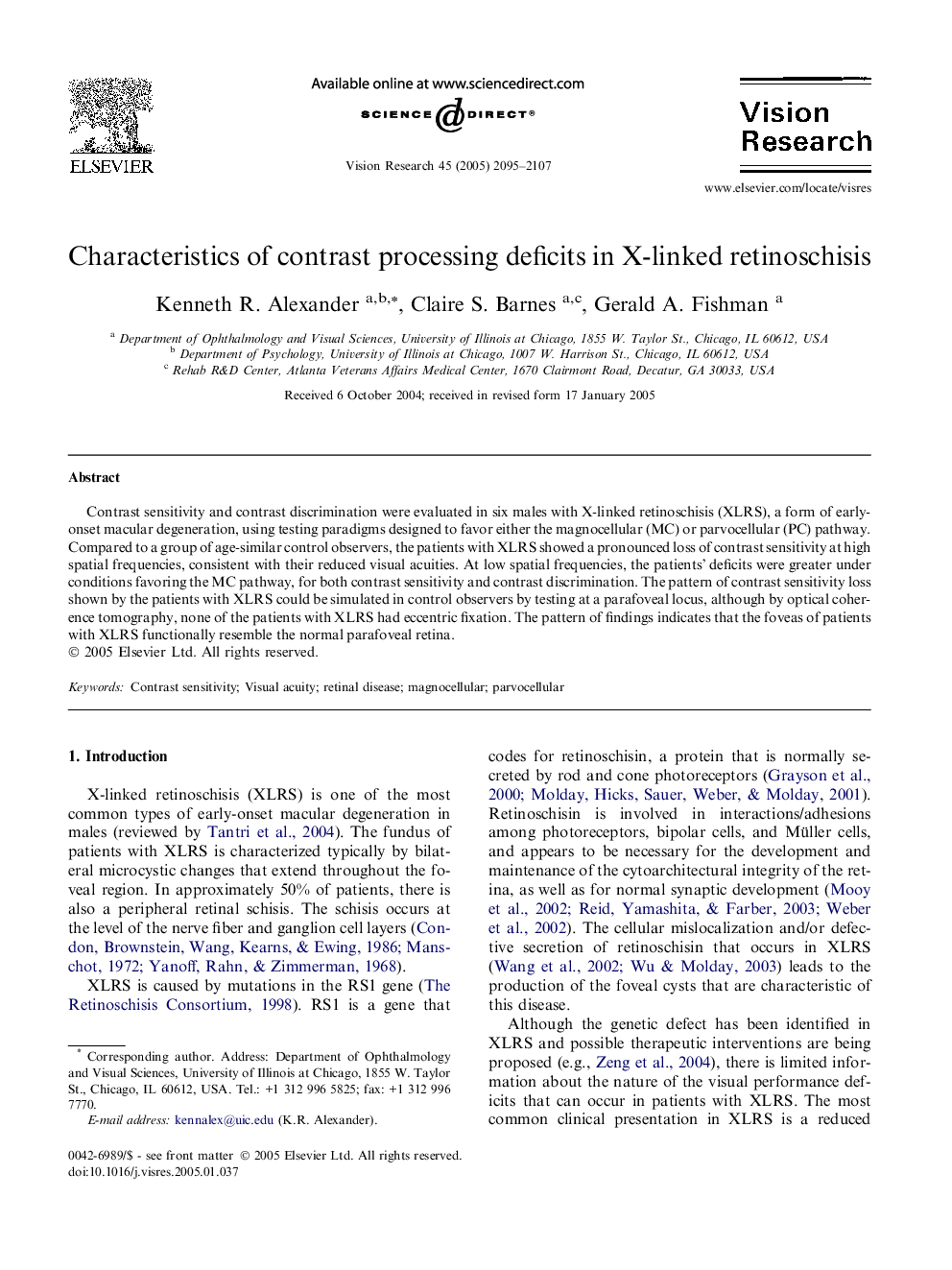| Article ID | Journal | Published Year | Pages | File Type |
|---|---|---|---|---|
| 4036802 | Vision Research | 2005 | 13 Pages |
Contrast sensitivity and contrast discrimination were evaluated in six males with X-linked retinoschisis (XLRS), a form of early-onset macular degeneration, using testing paradigms designed to favor either the magnocellular (MC) or parvocellular (PC) pathway. Compared to a group of age-similar control observers, the patients with XLRS showed a pronounced loss of contrast sensitivity at high spatial frequencies, consistent with their reduced visual acuities. At low spatial frequencies, the patients’ deficits were greater under conditions favoring the MC pathway, for both contrast sensitivity and contrast discrimination. The pattern of contrast sensitivity loss shown by the patients with XLRS could be simulated in control observers by testing at a parafoveal locus, although by optical coherence tomography, none of the patients with XLRS had eccentric fixation. The pattern of findings indicates that the foveas of patients with XLRS functionally resemble the normal parafoveal retina.
